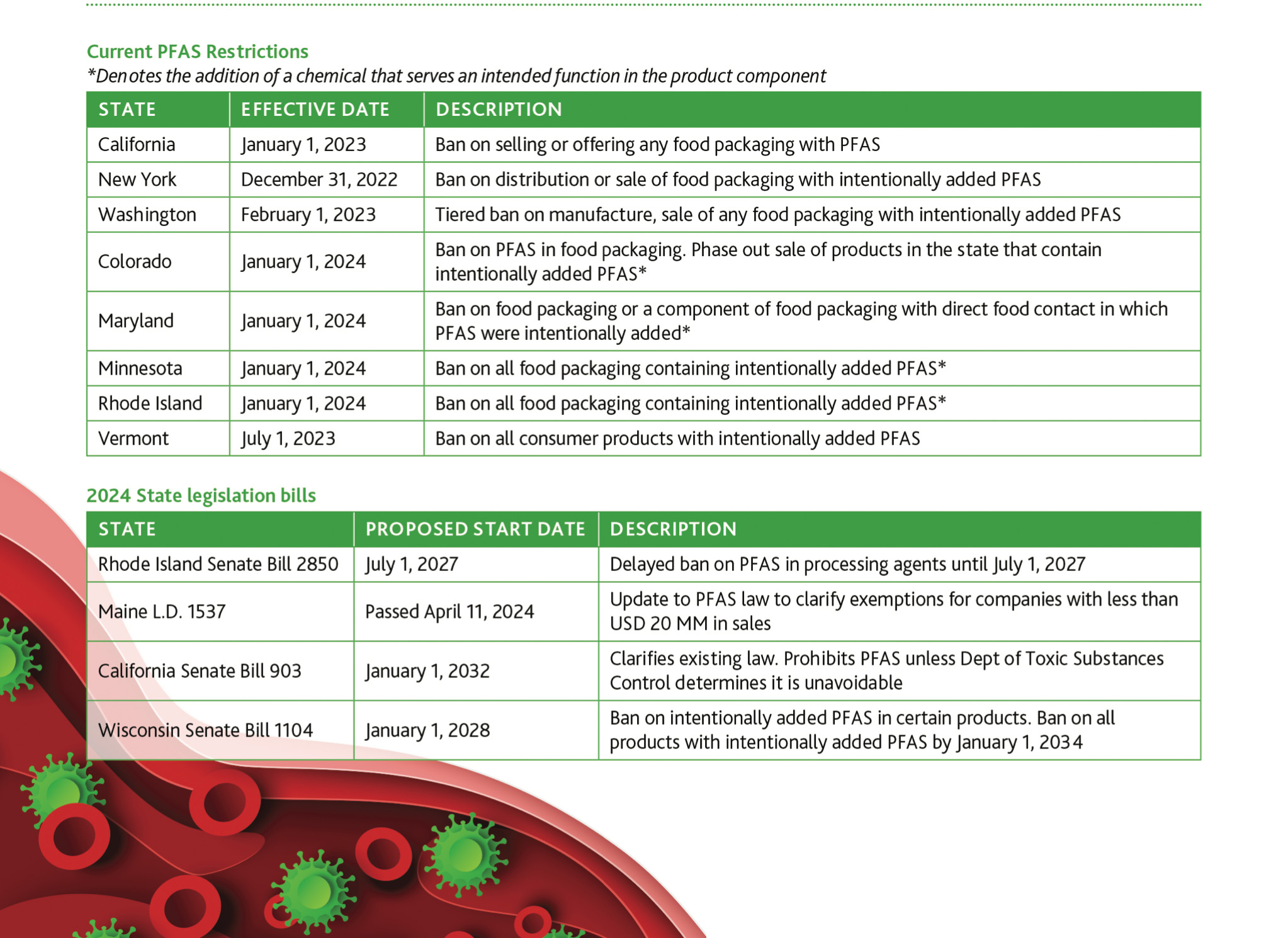A guide to understanding PFAS
A guide to understanding PFAS TLMI's VP of sustainability, Rosalyn Bandy compiled a list of everything a label converter needs to know when it comes to PFAS

TLMI routinely provides educational webinars on topics of interest and concern to its members. Recently, it hosted a panel of experts presenting on the topic of PFAS. The valuable information from that presentation can be found distilled into main take-aways on TLMIs' PFAS Cheat Sheet' below.
What is PFAS?
PFAS stands for Per-Fluoro-Alkyl-Substances or Poly-Fluoro-Alkyl Substances. There are over 15,000 types of PFAS with varying levels of impact on health and the environment.
Why is PFAS a problem?
Some types have a half-life of over 1,000 years (forever chemicals). They are bio-accumulative and can stay in your bloodstream for years. The Centers for Disease Control and Prevention say 97 percent of Americans have PFAS in their blood. Health effects include endocrine disruption, reprotoxic, immunotoxic and carcinogenic.
Why is PFAS used?
Provides water and grease barriers to paper products, aesthetic quality and application performance in polymer films, inks and coatings.
Regulations for PFAS
There are 277 introduced policies in 34 states. There are 141 adopted policies in 28 states. Legislation will continue to roll out with states restricting PFAS use, which will likely adjust statutes to provide additional time needed for compliance purposes. Companies with PFAS in supply chain should anticipate reporting requirements and registration. Diligence and record keeping on research are key.
In April 2024 EPA passed rule on PFAS limits in drinking water and reporting requirements.

Stay up to date
Subscribe to the free Label News newsletter and receive the latest content every week. We'll never share your email address.


